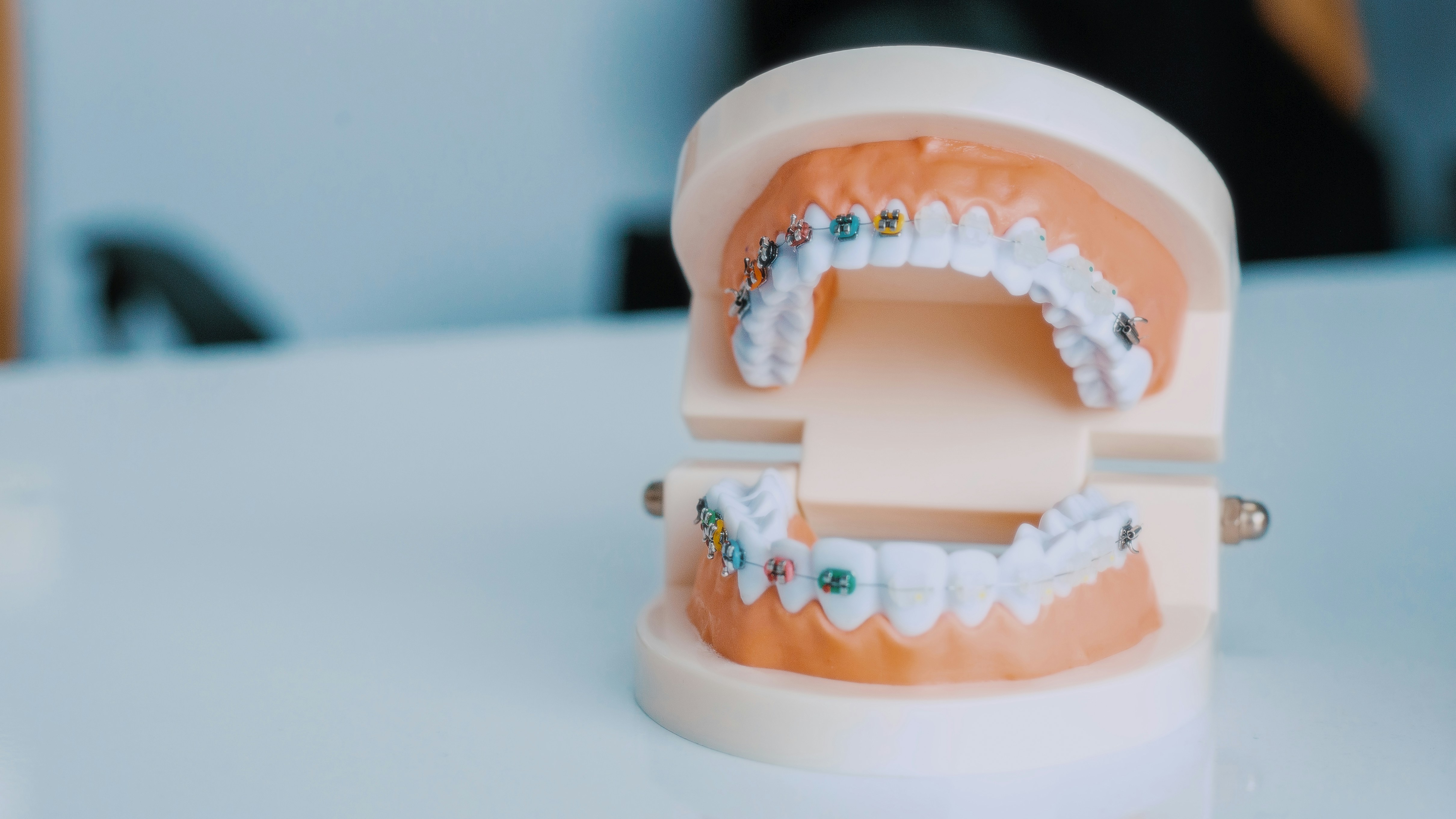
1 nov. 2024
Bruxism in Children: Understanding and Managing the Condition
Bruxism in Children: Understanding and Managing the Condition
Bruxism, the habit of grinding or clenching teeth, is not just a concern for adults; it can also affect children. Understanding bruxism in children is crucial for parents seeking to manage this condition effectively. In this article, we will explore the causes and symptoms of bruxism in children, as well as practical management strategies. Additionally, we will highlight how the Bruxism+ app can support families dealing with this issue.
Causes of Bruxism in Children
Several factors can contribute to bruxism in children, including:
Stress and Anxiety: Just like adults, children can experience stress from school, social situations, or changes in their environment. This stress often manifests as teeth grinding.
Teething: Young children may grind their teeth during the teething process as they try to relieve discomfort.
Sleep Disorders: Conditions such as sleep apnea can lead to bruxism, as disrupted sleep patterns may cause muscle tension and grinding.
Misaligned Teeth: Dental issues or misaligned jaws can lead to bruxism as the child unconsciously attempts to find a comfortable position for their teeth.
Understanding the underlying causes can help parents take proactive measures to address bruxism.
Symptoms of Bruxism in Children
Identifying bruxism in children can be challenging, but there are common signs to watch for:
Grinding Noises: Listen for grinding or clenching sounds during sleep.
Jaw Pain: Children may complain of jaw pain or discomfort, especially in the morning.
Tooth Damage: Check for worn-down teeth, increased sensitivity, or dental issues.
Headaches: Frequent headaches or facial pain can also indicate bruxism.
If you suspect your child has bruxism, it's essential to consult a healthcare professional for guidance.
Management Strategies for Bruxism in Children
Here are some effective strategies to help manage bruxism in children:
Encourage Relaxation Techniques: Teach your child relaxation methods, such as deep breathing or guided imagery, to help alleviate stress. The Bruxism+ app offers exercises that can be tailored for children.
Maintain a Regular Sleep Schedule: Ensure your child has a consistent bedtime routine to promote restful sleep and reduce anxiety.
Consult a Dentist: A dental professional can assess your child’s teeth and recommend a mouthguard if necessary to protect against damage from grinding.
Address Underlying Stressors: If stress is a contributing factor, consider discussing any concerns with your child and providing support to help them cope.
How Bruxism+ Can Assist
The Bruxism+ app can be a valuable tool for parents managing their child’s bruxism. With features to log grinding episodes, track sleep patterns, and access relaxation exercises, the app empowers families to take control of the situation. By incorporating the app into your child's routine, you can foster awareness and promote relaxation, leading to potential improvements in bruxism symptoms.
Conclusion
Bruxism in children can be concerning for parents, but understanding the causes, symptoms, and management strategies can make a significant difference. By addressing underlying stressors and utilizing the Bruxism+ app as a resource, families can work together to reduce teeth grinding and enhance their child’s overall well-being. Prioritize your child’s dental health and emotional support to pave the way for a brighter, bruxism-free future.
Bruxism in Children: Understanding and Managing the Condition
Bruxism, the habit of grinding or clenching teeth, is not just a concern for adults; it can also affect children. Understanding bruxism in children is crucial for parents seeking to manage this condition effectively. In this article, we will explore the causes and symptoms of bruxism in children, as well as practical management strategies. Additionally, we will highlight how the Bruxism+ app can support families dealing with this issue.
Causes of Bruxism in Children
Several factors can contribute to bruxism in children, including:
Stress and Anxiety: Just like adults, children can experience stress from school, social situations, or changes in their environment. This stress often manifests as teeth grinding.
Teething: Young children may grind their teeth during the teething process as they try to relieve discomfort.
Sleep Disorders: Conditions such as sleep apnea can lead to bruxism, as disrupted sleep patterns may cause muscle tension and grinding.
Misaligned Teeth: Dental issues or misaligned jaws can lead to bruxism as the child unconsciously attempts to find a comfortable position for their teeth.
Understanding the underlying causes can help parents take proactive measures to address bruxism.
Symptoms of Bruxism in Children
Identifying bruxism in children can be challenging, but there are common signs to watch for:
Grinding Noises: Listen for grinding or clenching sounds during sleep.
Jaw Pain: Children may complain of jaw pain or discomfort, especially in the morning.
Tooth Damage: Check for worn-down teeth, increased sensitivity, or dental issues.
Headaches: Frequent headaches or facial pain can also indicate bruxism.
If you suspect your child has bruxism, it's essential to consult a healthcare professional for guidance.
Management Strategies for Bruxism in Children
Here are some effective strategies to help manage bruxism in children:
Encourage Relaxation Techniques: Teach your child relaxation methods, such as deep breathing or guided imagery, to help alleviate stress. The Bruxism+ app offers exercises that can be tailored for children.
Maintain a Regular Sleep Schedule: Ensure your child has a consistent bedtime routine to promote restful sleep and reduce anxiety.
Consult a Dentist: A dental professional can assess your child’s teeth and recommend a mouthguard if necessary to protect against damage from grinding.
Address Underlying Stressors: If stress is a contributing factor, consider discussing any concerns with your child and providing support to help them cope.
How Bruxism+ Can Assist
The Bruxism+ app can be a valuable tool for parents managing their child’s bruxism. With features to log grinding episodes, track sleep patterns, and access relaxation exercises, the app empowers families to take control of the situation. By incorporating the app into your child's routine, you can foster awareness and promote relaxation, leading to potential improvements in bruxism symptoms.
Conclusion
Bruxism in children can be concerning for parents, but understanding the causes, symptoms, and management strategies can make a significant difference. By addressing underlying stressors and utilizing the Bruxism+ app as a resource, families can work together to reduce teeth grinding and enhance their child’s overall well-being. Prioritize your child’s dental health and emotional support to pave the way for a brighter, bruxism-free future.
Bruxism in Children: Understanding and Managing the Condition
Bruxism, the habit of grinding or clenching teeth, is not just a concern for adults; it can also affect children. Understanding bruxism in children is crucial for parents seeking to manage this condition effectively. In this article, we will explore the causes and symptoms of bruxism in children, as well as practical management strategies. Additionally, we will highlight how the Bruxism+ app can support families dealing with this issue.
Causes of Bruxism in Children
Several factors can contribute to bruxism in children, including:
Stress and Anxiety: Just like adults, children can experience stress from school, social situations, or changes in their environment. This stress often manifests as teeth grinding.
Teething: Young children may grind their teeth during the teething process as they try to relieve discomfort.
Sleep Disorders: Conditions such as sleep apnea can lead to bruxism, as disrupted sleep patterns may cause muscle tension and grinding.
Misaligned Teeth: Dental issues or misaligned jaws can lead to bruxism as the child unconsciously attempts to find a comfortable position for their teeth.
Understanding the underlying causes can help parents take proactive measures to address bruxism.
Symptoms of Bruxism in Children
Identifying bruxism in children can be challenging, but there are common signs to watch for:
Grinding Noises: Listen for grinding or clenching sounds during sleep.
Jaw Pain: Children may complain of jaw pain or discomfort, especially in the morning.
Tooth Damage: Check for worn-down teeth, increased sensitivity, or dental issues.
Headaches: Frequent headaches or facial pain can also indicate bruxism.
If you suspect your child has bruxism, it's essential to consult a healthcare professional for guidance.
Management Strategies for Bruxism in Children
Here are some effective strategies to help manage bruxism in children:
Encourage Relaxation Techniques: Teach your child relaxation methods, such as deep breathing or guided imagery, to help alleviate stress. The Bruxism+ app offers exercises that can be tailored for children.
Maintain a Regular Sleep Schedule: Ensure your child has a consistent bedtime routine to promote restful sleep and reduce anxiety.
Consult a Dentist: A dental professional can assess your child’s teeth and recommend a mouthguard if necessary to protect against damage from grinding.
Address Underlying Stressors: If stress is a contributing factor, consider discussing any concerns with your child and providing support to help them cope.
How Bruxism+ Can Assist
The Bruxism+ app can be a valuable tool for parents managing their child’s bruxism. With features to log grinding episodes, track sleep patterns, and access relaxation exercises, the app empowers families to take control of the situation. By incorporating the app into your child's routine, you can foster awareness and promote relaxation, leading to potential improvements in bruxism symptoms.
Conclusion
Bruxism in children can be concerning for parents, but understanding the causes, symptoms, and management strategies can make a significant difference. By addressing underlying stressors and utilizing the Bruxism+ app as a resource, families can work together to reduce teeth grinding and enhance their child’s overall well-being. Prioritize your child’s dental health and emotional support to pave the way for a brighter, bruxism-free future.
Nos dernières histoires :


15 nov. 2024
Dietary Changes That May Help Reduce Bruxism Symptoms


11 nov. 2024
The Impact of Jaw Alignment on Bruxism: What You Need to Know


8 nov. 2024
Comprendre l'apnée du sommeil et son lien avec le bruxisme
Voir tous les posts
Médias sociaux
Médias sociaux
Médias sociaux


